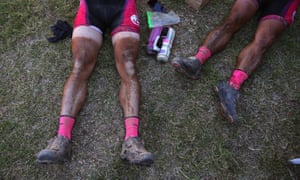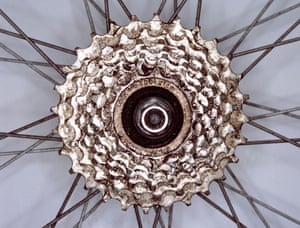Whether it’s in preparation for mastering the hills on your local club ride, or because you have aspirations to ride some of the mountain passes made famous by the Grand Tours, efficient climbing on a bike can make all the difference to a long day in the saddle. So here are eight simple ways to make some big improvements.
Weight
The first place to start is with yourself. You are the engine that has to get to the top, and the size and power of that engine will determine how quickly you reach the summit. The best way to get up hills faster is to shift unnecessary bulk. By dropping a few pounds, you will notice a considerable difference in performance. This doesn’t need to be out-and-out dieting, just making small adjustments to your diet (such as cutting out those extra biscuits with your tea: calories that serve no purpose will only slow you down). An easy way to do this is with a food diary; start noting down your meals, drinks and snacks and you’ll soon work out where the easy wins can be made.

Conditioning
If losing weight isn’t for you, then fine-tuning your power output is a surefire way to make those mountains seem like speed bumps. There are ways to achieve this without using a power monitor; interval training (alternating periods of high- and low-intensity activity) conditions the body to cope with higher levels of effort. You can also try intervals of “over-gearing” where you ride in a higher (harder) gear than normal for a set time so as to improve the way that your muscles handle effort.
Core
For efficient climbing, you need to work on your strength – more accurately, your core strength. A strong core (your abdominal and thoracic muscles) is crucial in cycling for efficient power transfer on the bike. A solid core will mean stability through the hips and pelvis, which in turn equates to less side-to-side rocking and greater energy transfer, especially when climbing in the saddle. A strong core will also help with any lower-back fatigue; plus, when climbing out the saddle, those rock-like abdominals will help transform the torsional forces exerted into upward motion rather than wasted movement.
Legs
Aside from your core, to ride up hills, you obviously need strong legs. You will generate a certain amount of force using your quadriceps and hamstrings, so you’ll need to make sure you pay attention to these major muscles – basic bodyweight drills such as burpees, squat jumps and lunge variations should become part of your training regime, but the other muscle group that will need attention is the gluteus (your bottom).

Glutes
When mastering the power of your posterior, you’ll notice a significant increase in hill-climbing capabilities, but you need to start by activating that muscle. The best way to assess your gluteus engagement is to see a physiotherapist with a specialty in cycling biomechanics. They’ll very quickly be able to advise you on exercises or bike setup changes to help you fire on all cylinders. However, you can find out how much basic control you have of your gluteus muscles with a simple test you can do at home: simply lie on your back with a hand under each bum-cheek, legs straight and then squeeze each gluteus independently, pushing against your hand. The aim is to just activate the left or right gluteus muscles without engaging the opposite side, abdominals, hamstring or quad. If you can do this, you’re on the path to climbing supremacy; you just need to convert this into power in the pedal stroke.
Gears
Moving to the bike, the first thing to consider is gear ratios. Using compact cranks with a 50 x 34 chainring combination (as opposed to the standard 53 x 39) and cassettes with a 27, 28 or even 30 cog will create a greater range of lower gears and can help you find a higher, more comfortable cadence without grinding it out on every climb.

Cadence
The reason why a low cadence (around 65 RPM) should be avoided where possible is that it puts your muscles in a state of contraction for a longer period of time, and the longer a muscle is put under load, the faster it fatigues. When your cadence is higher, around the 90RPM mark, your muscles don’t contract for as long during each pedal stroke and thus won’t be as tired, allowing you to climb further.
Frame
Challenging ascents are when a lightweight bike comes into its own. The difference between a 7kg bike and an 11kg bike becomes very apparent over a 17km climb, but light bikes can come at a cost. If you are happy to spend, then you’ll be spoilt for choice, but if you were to change one thing, then you can’t go too far wrong with some lighter, stiffer wheels – even shaving 500g off will make a noticeable difference.
Taking all of this in may seem like a lot of work, but it won’t just be your climbing that is improved. Core strength is vital to a powerful sprint, too, and mastering the art of a higher cadence will help develop your cardio-vascular system – so not only will you be lighter and stronger, but your fitness levels will improve, too. Now get out there and find some hills.



